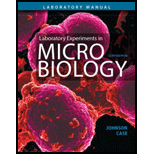
Why are tears and saliva potential biohazards?
To analyze:
Tears and saliva potential biohazards.
Introduction:
Biohazard is any substance of biological origin posing an intense threat to living beings and their health. It can be bacteria, viruses, a bio-toxin, infected body fluids medical wastes, etc.
Explanation of Solution
Body fluids like blood, saliva, semen, vaginal fluids, mucus, transport nutrients to the cells and expel wastes out of the body. Saliva that is produced by the salivary gland contains glycoproteins and minerals. It becomes a biohazard if it is infected with deadly microbes. There are many levels of biohazards amongst which Biohazard level 2 are agents that pose severe illness that gets transmitted through direct exposure to the infected fluid. For instance, Hepatitis B gets transmitted through infected blood, saliva, semen, etc.
Tears and saliva are not potentially infectious materials unless contaminated with blood or other OPIM (Other Potentially Infectious Materials) like body fluids, unfixed tissue or organ from a live or dead human, Infected cell or tissue cultures.
Hence, the body fluids with infection are major biohazards if transmitted.
Want to see more full solutions like this?
Chapter 41 Solutions
Laboratory Experiments in Microbiology (12th Edition) (What's New in Microbiology)
- What protein does saliva have that helps break down starchy foods?arrow_forwardhow does the body keep the stomach acid from seeping into the intestines and the other parts of the body?arrow_forwardWhy is it unsafe for a fecal transplant recipient to receive fecesfrom an unscreened donor?arrow_forward
